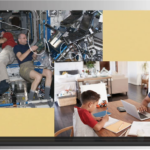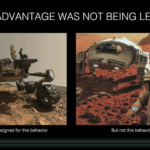
JO AIKEN
University College London/ETHNO-ISS (NASA)
ANGELA RAMER
HKS Architects
[s2If is_user_logged_in()]DOWNLOAD PDF
[/s2If]
[s2If current_user_can(access_s2member_level1)]
[/s2If]
Since March 2020, many employees around the world have been forced to work from home due to the COVID-19 global pandemic. Astronauts aboard the International Space Station (ISS) have experience in working in isolation and confinement. This paper focuses on a comparison of astronauts on the ISS and Earth-bound architects and interior designers restricted to working from home (i.e. their sofas) due to the pandemic. Isolation at work emerges as a complex phenomenon characterized by the measured and perceived distances between physical, social, and temporal spaces. By examining the scale-making activities of NASA and HKS, analogs provide a possible means for studying and predicting the complex dimensions of isolation. The work ecosystem is a useful tool in conceptualizing and operationalizing the employee experience to design the future of work and...

